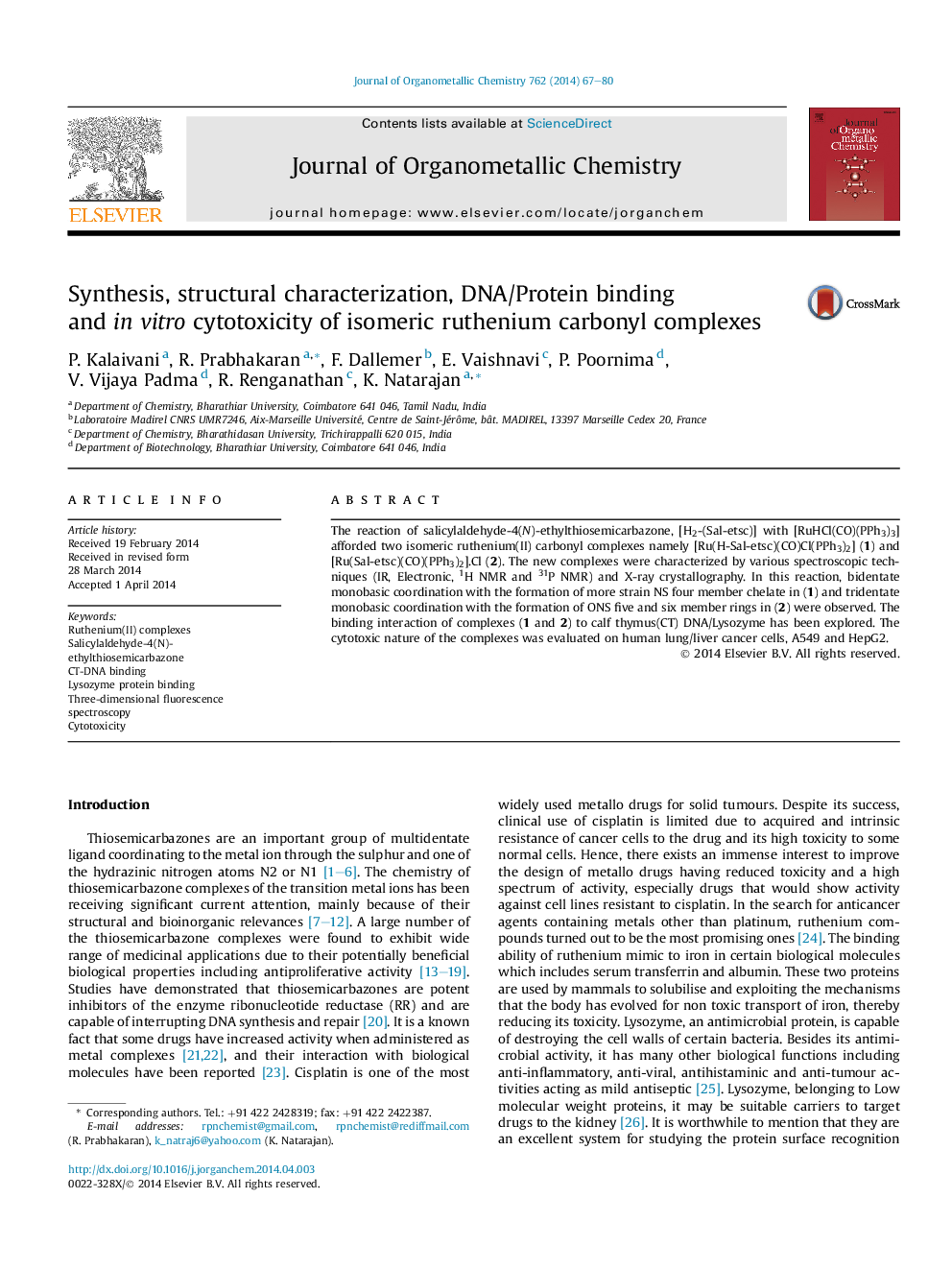| Article ID | Journal | Published Year | Pages | File Type |
|---|---|---|---|---|
| 1323432 | Journal of Organometallic Chemistry | 2014 | 14 Pages |
•Structurally different isomeric ruthenium(II) carbonyl complexes from one pot.•The complexes bound electrostatically with CT-DNA.•Fluorophore-quencher mechanism in lysozyme binding was static quenching.•Relatively higher cytotoxicity then cisplatin and other Ru(II) analogues.
The reaction of salicylaldehyde-4(N)-ethylthiosemicarbazone, [H2-(Sal-etsc)] with [RuHCl(CO)(PPh3)3] afforded two isomeric ruthenium(II) carbonyl complexes namely [Ru(H-Sal-etsc)(CO)Cl(PPh3)2] (1) and [Ru(Sal-etsc)(CO)(PPh3)2].Cl (2). The new complexes were characterized by various spectroscopic techniques (IR, Electronic, 1H NMR and 31P NMR) and X-ray crystallography. In this reaction, bidentate monobasic coordination with the formation of more strain NS four member chelate in (1) and tridentate monobasic coordination with the formation of ONS five and six member rings in (2) were observed. The binding interaction of complexes (1 and 2) to calf thymus(CT) DNA/Lysozyme has been explored. The cytotoxic nature of the complexes was evaluated on human lung/liver cancer cells, A549 and HepG2.
Graphical abstractNew structurally different isomeric ruthenium(II) complexes were obtained from a single pot reaction of [RuHCl(CO)(PPh3)3] and salicylaldehyde-4(N)-ethylthiosemicarbazone. The complexes exhibited better cytotoxic profile against A549 and HepG2 cell lines.Figure optionsDownload full-size imageDownload as PowerPoint slide
